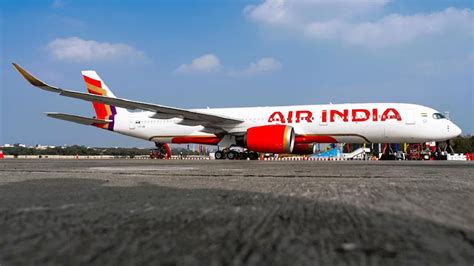
A harrowing Air India Express flight IX 1344 crash at Kerala’s Kozhikode airport in 2020, which resulted in the deaths of at least 18 people, including both pilots, has resurfaced with newly released footage showing the immediate aftermath of the incident. The video, obtained through Right to Information (RTI) requests, captures the devastating scene as rescue operations commenced amidst the wreckage of the Boeing 737.
Newly released video footage has emerged showing the immediate aftermath of the tragic Air India Express Flight IX 1344 crash at Kerala’s Kozhikode airport on August 7, 2020. The crash, which occurred during a repatriation flight as part of the Vande Bharat Mission, resulted in the loss of at least 18 lives, including both pilots. The footage, obtained through Right to Information (RTI) requests, reveals the chaotic and devastating scene as rescue operations began amidst the wreckage of the Boeing 737. The accident raised serious questions about airport safety, particularly concerning runway conditions during monsoon season, and the pilot’s decision-making process during the landing attempt.
The Air India Express Boeing 737, operating as Flight IX 1344 from Dubai to Kozhikode, was carrying 190 passengers and crew when it overshot the runway while attempting to land in heavy rain. The aircraft, a Boeing 737-800, registration VT-AXH, plunged into a valley and broke into two major sections upon impact. The newly released footage provides a visceral glimpse into the immediate aftermath, showing first responders and local residents working to extract survivors from the mangled wreckage.
The video, accessed via an RTI request filed by activist Girish Mittal, underscores the severity of the crash and the challenges faced by rescue teams in the immediate aftermath. The footage is raw and unfiltered, capturing the urgency and desperation of the moment.
Details of the Incident
Flight IX 1344 was a part of the Vande Bharat Mission, an initiative by the Indian government to repatriate Indian citizens stranded abroad due to the COVID-19 pandemic. The flight originated in Dubai and was scheduled to land at Kozhikode International Airport (CCJ), also known as Calicut International Airport, in Kerala. On the day of the accident, Kozhikode was experiencing heavy rainfall and poor visibility due to the monsoon season.
The aircraft made its initial approach to Runway 10, but the pilots decided to execute a go-around due to the unfavorable conditions. They then attempted a second landing on the same runway. During the second attempt, the aircraft touched down far beyond the designated touchdown zone, failing to stop before the end of the runway. The Boeing 737 overshot the runway, plunged into a 35-foot valley, and broke into two pieces. The impact was severe, causing significant damage to the aircraft and resulting in multiple fatalities and injuries.
Rescue Operations
Following the crash, a large-scale rescue operation was launched involving local authorities, airport personnel, and volunteers from the surrounding community. The newly released footage highlights the immediate response, showing emergency responders working tirelessly to extricate passengers from the wreckage. The challenging conditions, including heavy rain and the difficult terrain of the crash site, hampered rescue efforts.
The injured were transported to various hospitals in Kozhikode and nearby areas. Medical teams worked around the clock to provide treatment to the survivors, many of whom sustained serious injuries. The rescue operation continued throughout the night and into the following day, as authorities worked to recover bodies and secure the crash site.
Investigation and Findings
The Indian government launched a formal investigation into the crash, led by the Aircraft Accident Investigation Bureau (AAIB). The investigation aimed to determine the cause of the accident and to identify any factors that may have contributed to the crash. The AAIB team examined the flight data recorder (FDR) and the cockpit voice recorder (CVR) to analyze the flight path, the pilot’s actions, and communication between the pilots and air traffic control.
The investigation report, released in 2021, cited several factors that contributed to the accident. These included:
- Pilot Error: The report concluded that the pilot-in-command (PIC) failed to adhere to standard operating procedures (SOPs) and exercised poor judgment during the landing approach. The PIC continued with the landing despite the unfavorable weather conditions and the long touchdown.
- Adverse Weather Conditions: Heavy rainfall and poor visibility significantly reduced the margin for error during the landing. The report noted that the weather conditions were beyond the acceptable limits for a safe landing.
- Runway Conditions: The runway at Kozhikode International Airport is a table-top runway, which means it is located on a plateau or hill with steep drops at either end. Table-top runways pose additional challenges for pilots, particularly during adverse weather conditions. The report also noted that the runway had a low friction coefficient due to the heavy rain, which further reduced the aircraft’s braking performance.
- Crew Resource Management (CRM): The report identified deficiencies in CRM, noting that the co-pilot did not effectively challenge the PIC’s decisions or provide adequate support during the critical phases of the flight.
Safety Recommendations
In light of the findings, the AAIB issued several safety recommendations aimed at preventing similar accidents in the future. These recommendations included:
- Enhanced Pilot Training: The AAIB recommended that airlines provide enhanced training to pilots on landing techniques in adverse weather conditions and on table-top runways. The training should emphasize the importance of adhering to SOPs and making go-around decisions when necessary.
- Improved Weather Forecasting: The AAIB recommended that airports improve their weather forecasting capabilities and provide more accurate and timely weather information to pilots. This would enable pilots to make more informed decisions about landing approaches.
- Runway Safety Enhancements: The AAIB recommended that airports with table-top runways implement additional safety measures, such as installing engineered materials arresting systems (EMAS) at the end of runways. EMAS are designed to decelerate aircraft that overshoot the runway, reducing the risk of a serious accident.
- CRM Training: The AAIB recommended that airlines provide enhanced CRM training to flight crews, emphasizing the importance of effective communication and decision-making in the cockpit.
- Stricter Enforcement of SOPs: The AAIB recommended that regulatory authorities加强对航空公司标准作业程序的执行力度,并确保飞行员严格遵守。
Kozhikode Airport: A History of Safety Concerns
Kozhikode International Airport has faced safety concerns even before the 2020 crash. The airport’s table-top runway and its location in a region with frequent heavy rainfall have raised questions about its suitability for operations, particularly during the monsoon season.
In 2015, the Directorate General of Civil Aviation (DGCA) conducted a safety audit of Kozhikode International Airport and identified several deficiencies. The audit report raised concerns about the runway’s length, the lack of a runway end safety area (RESA), and the airport’s preparedness for handling emergency situations.
Following the 2015 audit, the DGCA issued several directives to the airport operator to address the identified deficiencies. However, progress on implementing the recommendations was slow, and some of the safety concerns remained unaddressed at the time of the 2020 crash.
The 2020 accident further highlighted the need for urgent action to improve safety at Kozhikode International Airport and other airports with similar characteristics.
Families’ Grief and Calls for Justice
The Air India Express crash at Kozhikode was a devastating tragedy that caused immense pain and suffering to the families of the victims. Many families lost loved ones, including parents, children, and spouses. The crash also left many survivors with serious injuries and lasting emotional trauma.
In the aftermath of the accident, families of the victims have called for justice and accountability. They have demanded a thorough investigation into the causes of the crash and have urged the government to take action to prevent similar accidents in the future.
Some families have also filed lawsuits against Air India Express and other parties, seeking compensation for their losses. These lawsuits allege that the airline was negligent in its operations and that the airport operator failed to maintain a safe environment for air travel.
The Vande Bharat Mission and its Risks
The Air India Express flight that crashed at Kozhikode was part of the Vande Bharat Mission, an ambitious initiative launched by the Indian government to repatriate Indian citizens stranded abroad due to the COVID-19 pandemic. The mission involved operating hundreds of special flights to bring home millions of Indians who were stranded in various countries due to travel restrictions and border closures.
While the Vande Bharat Mission was widely praised for its humanitarian goals, it also faced criticism for its potential risks. Some experts raised concerns about the safety of operating so many flights in a short period, particularly to airports with challenging conditions. There were also concerns about the potential for the spread of COVID-19 on these flights.
The Air India Express crash at Kozhikode highlighted the risks associated with operating flights to airports with challenging conditions, particularly during adverse weather. The accident underscored the need for airlines and regulatory authorities to prioritize safety above all else, even during emergency situations.
Expert Opinions and Analysis
Aviation experts have offered various perspectives on the Air India Express crash at Kozhikode. Some experts have pointed to the pilot’s error as the primary cause of the accident, while others have emphasized the role of adverse weather conditions and the challenging characteristics of the airport.
Several experts have also highlighted the importance of proper training and adherence to standard operating procedures (SOPs) in preventing accidents. They have argued that pilots must be adequately trained to handle challenging situations, such as landing in adverse weather conditions or on table-top runways.
Some experts have also called for a review of safety standards at airports with challenging characteristics, such as table-top runways. They have suggested that these airports should be equipped with additional safety measures, such as EMAS, to reduce the risk of accidents.
The Aftermath and Lessons Learned
The Air India Express crash at Kozhikode was a tragic event that had a profound impact on the aviation industry and the families of the victims. The accident served as a stark reminder of the risks associated with air travel and the importance of prioritizing safety above all else.
In the aftermath of the crash, several steps have been taken to improve safety at Kozhikode International Airport and other airports with similar characteristics. These steps include:
- Enhanced Pilot Training: Airlines have enhanced their pilot training programs to provide pilots with better training on landing techniques in adverse weather conditions and on table-top runways.
- Improved Weather Forecasting: Airports have improved their weather forecasting capabilities and are providing more accurate and timely weather information to pilots.
- Runway Safety Enhancements: Some airports with table-top runways are considering installing EMAS at the end of runways to reduce the risk of accidents.
- Stricter Enforcement of SOPs: Regulatory authorities are加强对航空公司标准作业程序的执行力度,并确保飞行员严格遵守。
While these steps are positive, more needs to be done to ensure the safety of air travel in India and around the world. Airlines, airports, and regulatory authorities must continue to work together to identify and address potential safety risks and to implement measures to prevent accidents.
Frequently Asked Questions (FAQ)
-
What caused the Air India Express Flight IX 1344 crash at Kozhikode?
The crash was attributed to a combination of factors, including pilot error (failure to adhere to standard operating procedures and poor judgment during landing), adverse weather conditions (heavy rainfall and poor visibility), runway conditions (table-top runway with a low friction coefficient), and deficiencies in crew resource management.
-
Where did the Air India Express Flight IX 1344 originate and what was its destination?
The flight originated in Dubai and was destined for Kozhikode International Airport (CCJ) in Kerala, India. It was a repatriation flight as part of the Vande Bharat Mission.
-
What is a table-top runway and why is it considered more dangerous?
A table-top runway is located on a plateau or hill with steep drops at either end. This design reduces the margin for error during landing and takeoff, particularly in adverse weather conditions, as there is less room to recover from an overshoot or undershoot.
-
What safety recommendations were made following the investigation of the crash?
The safety recommendations included enhanced pilot training on landing in adverse weather and on table-top runways, improved weather forecasting at airports, runway safety enhancements such as installing EMAS, enhanced CRM training for flight crews, and stricter enforcement of standard operating procedures by regulatory authorities.
-
What is the Vande Bharat Mission and how does it relate to the crash?
The Vande Bharat Mission was an initiative by the Indian government to repatriate Indian citizens stranded abroad due to the COVID-19 pandemic. Flight IX 1344 was part of this mission. The crash highlighted the risks associated with operating numerous flights in a short period, especially to airports with challenging conditions.
Conclusion
The resurfaced footage of the Air India Express Flight IX 1344 crash serves as a somber reminder of the human cost of aviation accidents. The incident underscores the critical importance of adhering to safety protocols, providing comprehensive pilot training, and maintaining stringent oversight of airport operations, especially at airports with inherent challenges like table-top runways and adverse weather conditions. The lessons learned from this tragedy must continue to inform efforts to enhance aviation safety and prevent similar accidents in the future. The focus remains on ensuring that the sacrifices made are not in vain and that the safety of passengers and crew remains the paramount concern in all aviation operations. The ongoing commitment to improving safety standards and implementing the recommendations made in the aftermath of the crash is crucial to preventing future tragedies and fostering a safer environment for air travel. The incident also highlights the crucial role of transparent investigation processes and the importance of accessible information to ensure accountability and continuous improvement in the aviation sector. It is essential that airlines, airports, regulatory bodies, and governments work collaboratively to mitigate risks, enhance safety measures, and uphold the highest standards of operational excellence to protect the lives of those who rely on air travel. The memories of those lost in the Air India Express Flight IX 1344 crash should serve as a constant inspiration to strive for a safer and more secure aviation future.
The accident brought to light systemic issues within the aviation industry, particularly the need for robust safety management systems and proactive risk mitigation strategies. It also emphasized the importance of fostering a culture of safety where pilots and crew members are encouraged to voice concerns and challenge decisions without fear of reprisal. This requires creating an environment of open communication and collaboration, where all stakeholders are committed to prioritizing safety above all else. Furthermore, the incident underscored the need for continuous monitoring and evaluation of safety performance, with regular audits and inspections to identify and address potential hazards before they lead to accidents. The focus should be on proactive prevention rather than reactive response, with a comprehensive approach to safety that encompasses all aspects of aviation operations, from flight planning and maintenance to air traffic control and emergency response. The lessons learned from the Air India Express Flight IX 1344 crash must be translated into concrete actions to improve safety standards and prevent similar tragedies from occurring in the future. This requires a collective effort from all stakeholders, with a shared commitment to upholding the highest standards of safety and operational excellence in the aviation industry.
The tragedy also brought to the forefront the critical role of technology in enhancing aviation safety. Advanced weather forecasting systems, enhanced ground proximity warning systems (EGPWS), and precision landing systems can provide pilots with critical information and assistance during challenging flight conditions. Investing in and deploying these technologies can significantly reduce the risk of accidents and improve overall safety. Furthermore, the use of data analytics and predictive modeling can help identify potential safety hazards and proactively address them before they lead to incidents. By leveraging technology and data, the aviation industry can move towards a more data-driven and proactive approach to safety management. This includes using flight data monitoring (FDM) programs to analyze flight data and identify areas where pilot performance can be improved, as well as using predictive maintenance techniques to identify potential maintenance issues before they lead to equipment failures. By embracing technology and data, the aviation industry can enhance its ability to prevent accidents and improve overall safety. The focus should be on continuous innovation and improvement, with a commitment to leveraging the latest technologies to enhance safety and operational efficiency. The Air India Express Flight IX 1344 crash serves as a catalyst for accelerating the adoption of new technologies and data-driven approaches to safety management in the aviation industry.
Beyond technological advancements, the human element remains paramount in ensuring aviation safety. Comprehensive pilot training programs, coupled with robust crew resource management (CRM) training, are essential for equipping pilots with the skills and knowledge needed to handle challenging situations effectively. CRM training should emphasize the importance of communication, teamwork, and decision-making in the cockpit, as well as the need for pilots to challenge each other’s decisions when necessary. In addition to technical skills, pilots should also possess strong leadership qualities, critical thinking abilities, and a commitment to safety. The selection and training of air traffic controllers are equally crucial, as they play a vital role in ensuring the safe separation of aircraft and preventing collisions. Air traffic controllers should undergo rigorous training and certification programs, and they should be equipped with the latest tools and technologies to support their work. Furthermore, ongoing training and professional development are essential for both pilots and air traffic controllers to maintain their skills and stay abreast of the latest safety procedures and regulations. The human element is the cornerstone of aviation safety, and investing in the training and development of aviation professionals is essential for preventing accidents and ensuring the safety of air travel. The Air India Express Flight IX 1344 crash serves as a reminder of the critical role that human factors play in aviation safety and the need for continuous improvement in this area.
Finally, the incident underscored the importance of a strong and independent regulatory authority to oversee aviation safety. The regulatory authority should have the power to enforce safety regulations, conduct audits and inspections, and impose penalties for violations. It should also be independent from political and commercial pressures, ensuring that its decisions are based solely on safety considerations. The regulatory authority should also work closely with airlines, airports, and other stakeholders to promote a culture of safety and to identify and address potential safety hazards. Furthermore, the regulatory authority should be transparent and accountable, providing regular reports to the public on its activities and performance. A strong and independent regulatory authority is essential for ensuring the safety of air travel and for maintaining public confidence in the aviation industry. The Air India Express Flight IX 1344 crash serves as a reminder of the critical role that regulatory oversight plays in aviation safety and the need for a robust and independent regulatory authority to ensure that safety standards are upheld.









